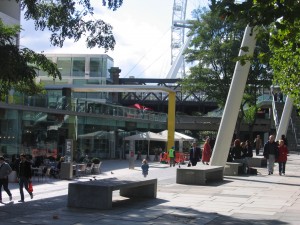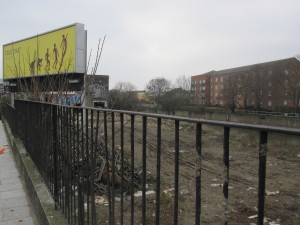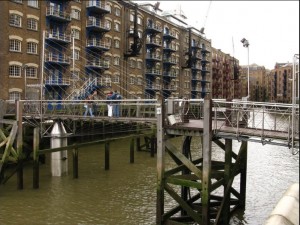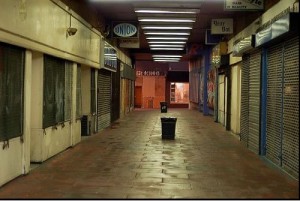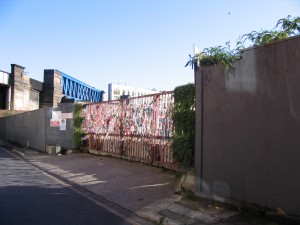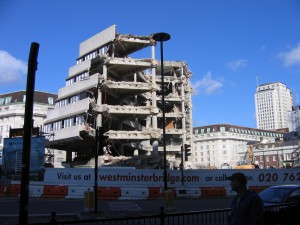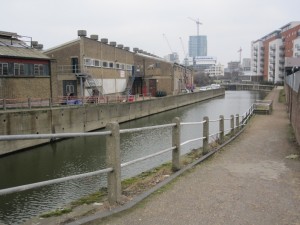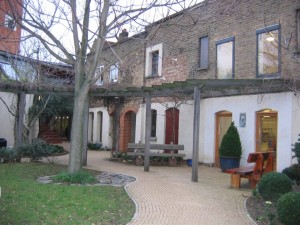Open Cities 33 Gentrification and Openness
Cities are changing all the time but who is benefiting from such change and how does it relate to city openness? Regeneration is a widespread means to transforming specific parts of cities where places tend to lose value. For our purpose the question is whether this process is making cities more open or more closed.
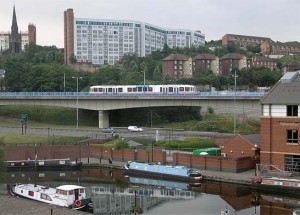
1_dia Sheffield regeneration through infrastructure source: http://www.railway-technology.com/projects/sheffield-tram/
Regeneration
Regeneration takes many different forms. Physical regeneration is most visible, but regeneration can also be economic, social or cultural, and these functional improvements can and do take place alongside each other.
Yet regeneration can also make values decline, such as social cohesion of displaced communities, increased redundancies, closure of existing businesses, loss of public realm.
Gentrification
What is an improvement for the city should be an improvement for its people. In reality urban change is complex and tends to benefit some while disadvantaging others. Regeneration tends to displace existing inhabitants and businesses and open improved areas to more affluent newcomers. Perceived as ‘gentrification’, this process is divisive and affects the city and its openness in various ways.
Is gentrification path dependent, an unavoidable consequence of urban regeneration? Does gentrification necessarily close spaces and options for the weaker parts of society? Or can urban change open opportunities in their favour, and under what conditions? These questions are explored by urban activists http://societycould.wordpress.com/ and were debated at the third TINAG festival in autumn 2010 (session on urban regeneration led by Judith Ryser which gave rise to a paper – forthcoming). http://thisisnotagateway.squarespace.com/

5_dia resistance against Olympic Game takeover of existing activities http://www.gamesmonitor.org.uk/
Resistance
Not surprisingly, those who feel threatened by gentrification are resisting change. <http://justspace2010.wordpress.com/> Resistance is manifesting itself most visibly in large scale projects of urban change. Examples in London are the transformation of Docklands into a second financial centre (Bob Colenut et at In: Patrick Malone (ed). 1996. City, Capital and Water. Routledge); the transformation of Kings Cross railway lands into a new business hub with high value housing (Michael Edwards, Kings Cross renaissance for whom? Forthcoming), or the legacy of the Olympic games in the Lea Valley whose future is by no means ascertained in favour of the existing population (see Judith Ryser in Planning for London, Issue 71 October/December 2009) < http://www.planninginlondon.com/>.
Gating
Gentrification is a slow process, especially in large urban areas. Moreover, it does not produce immutable places. In the long term, such places may decline again and give rise to new changes, losing value as well as gaining value. This is often the case with shopping malls.
A crucial part of regeneration is land, its ownership, acquisition, sometimes decontamination, obtaining rights for new uses, all of which add value to redevelopment.
In this process, sites are being fenced off and excluded from current uses. Many areas have morphologies favourable to segregation: docks and warehousing with walls against pilfering, utility plants, waterways, railways, overhead power lines contributing to poor access.
Creative destruction
Degradation or willful demolition of a built environment can be slow and continuous or saccadic, triggered by external events. The condition of such areas may be repulsive, but they may remain open.
Turning round
There can be an intermediary stage between declining and increasing values. Foot-holders – often artists and others who constitute the soft underbelly of urban change – occupy and use indeterminate, unclaimed spaces, open or opened by them.
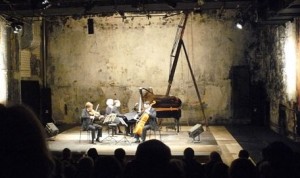
9_dia Tacheles Berlin occupied by artists source: http://www.guardian.co.uk/travel/2009/jul/12/berlin-squat-music-food-parties
They add value, and are often the trigger of regeneration, but most of the time they are excluded from longer term yields of their actions. This intermediary stage of change may be needed before the urban industry is willing to get hold of derelict land and real estate and is adding value, usually subject to public sector contribution.
Loss of openness
Gentrification takes place during this process which involves displacement and is increasing values unevenly by producing segregated spaces restricted to new beneficiaries. Regenerated areas can take the form of gated communities. Most crucial to the debate about open cities, they are privatising public realm which is no longer open to the city as a whole.
The question remains whether value added through regeneration can compensate loss of city openness and whether there can be more open regeneration, shared between existing users and preserving public realm for the city as a whole.

